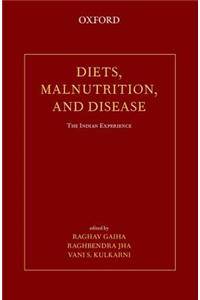Only logged in customers who have purchased this product may leave a review.
Sale!
Diets, Malnutrition, and Disease (Hardback) | Released: 26 Jul 2014
By: Raghbendra Jha (Author) Publisher: Oxford University Press, USA26.00% Off Original price was: ₹ 895.00.₹ 662.00Current price is: ₹ 662.00.
You save ₹ 233.00
What distinguishes this book from the current literature is its comprehensive analysis of malnutrition, meticulous exploration of dietary transition, poverty nutrition traps, links between multiple anthropometric failures among children and their vulnerability to infectious diseases, abysmal performance of the Public Distribution System and a critique of its conversion into a... Read More
In stock
Ships within 1-2 Business Days
100% Orginal Books
Easy Replacement
Certified product
Secure Checkout
On time delivery
Author:
Raghbendra Jha
Publisher Name:
Oxford University Press, USA
Language:
English
Binding:
(Hardback)
About The Book
What distinguishes this book from the current literature is its comprehensive analysis of malnutrition, meticulous exploration of dietary transition, poverty nutrition traps, links between multiple anthropometric failures among children and their vulnerability to infectious diseases, abysmal performance of the Public Distribution System and a critique of its conversion into a universal food subsidy, the links between affluence, obesity, and non-communicable diseases (NCDs) and the health policy challenge of a 'double burden of disease' of high communicable disease mortality and a growing burden of NCD mortality. Why has calorie intake declined despite rapid economic growth is puzzling. An explanation is developed that encompasses the influences of food prices, growing affluence, urbanization, life-style changes and less strenuous activity levels. Dietary diversification had a role in lowering calorie intake. New light is shed on poverty-nutrition traps that limit the ability of undernourished to engage in productive and remunerative employment. Child malnutrition has remained stubbornly high. As simultaneous anthropometric failures among children (e.g. wasting, stunting, and underweight) are closely related to infectious diseases, a composite indicator of malnutrition, its variation and links to infectious diseases are analysed. Amelioration of child malnutrition through women's empowerment is emphasised. As an epidemiological transition is underway-higher deaths from chronic degenerative non-communicable diseases (NCDs) than from communicable diseases-key contributory factors are aging, affluence, and overweight/obesity. Health policy choices are, however, confounded by the irreversibility of growing affluence, life-style changes and urbanization. Although controversial, a universal food subsidy was legislated recently as the National Food Security Act (NFSA). The critique rests on huge leakages that will magnify under NFSA and aggravate fiscal deficit without a drastic overhaul of the PDS. A distillation of lessons from policies pursued elsewhere and various initiatives in India is given. The vision that emerges is unavoidably incomplete in some respects but illuminates successes, and failures in designing policies and in their implementation.About the Author: Raghav Gaiha, Visiting Fellow, Economics, Australian National University, Raghbendra Jha, Rajiv Gandhi Chair Professor/Executive Director, Australia South Asia Research Centre, The Australian National University, Canberra, Australia, Vani S Kulkarni, Postdoctoral Associate, Urban Ethnography Project, Yale University Raghav Gaiha is Visiting Fellow in Economics, Australian National University. Raghbendra Jha is Rajiv Gandhi Chair Professor and Executive Director, Australia South Asia Research Centre, The Australian National University, Canberra, ACT 0200 Australia. Vani S. Kulkarni is a Postdoctoral Associate at the Urban Ethnography Project at Yale University.


Reviews
There are no reviews yet.